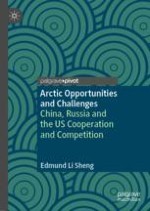2022 | OriginalPaper | Buchkapitel
3. The New Strategic Triangle in the Arctic: China, Russia, and the United States
verfasst von : Edmund Li Sheng
Erschienen in: Arctic Opportunities and Challenges
Verlag: Springer Singapore
Aktivieren Sie unsere intelligente Suche, um passende Fachinhalte oder Patente zu finden.
Wählen Sie Textabschnitte aus um mit Künstlicher Intelligenz passenden Patente zu finden. powered by
Markieren Sie Textabschnitte, um KI-gestützt weitere passende Inhalte zu finden. powered by
